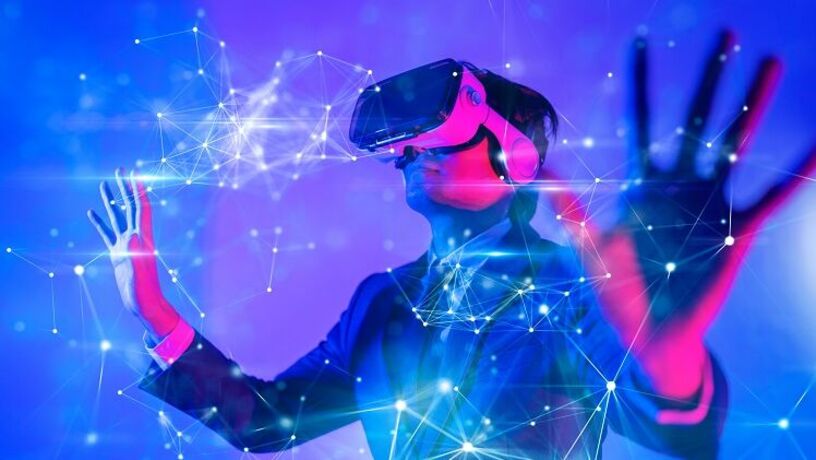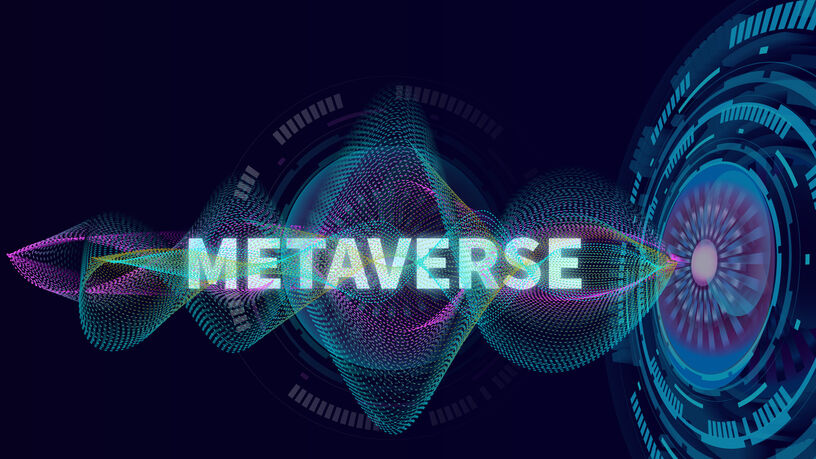Between flying astronauts in space and sensor-controlled excavators, the term metaverse (MV) can encompass many things. The technology experienced a boom a few years ago with the high-profile involvement of large US tech companies. In the meantime, the first wave of euphoria has passed and it is becoming clearer how companies, especially SMEs, can benefit. This article is intended to provide an overview of what can be understood by the concept of MV, where its origins lie and what possible applications exist.
The history of the MV
The MV is the result of a combination of technological, cultural and economic developments that have taken place over several decades. The actual realisation was preceded by early scenarios from the world of science fiction. In his novel "Snow Crash" (1992), Neal Stephenson was one of the first to describe the idea of a digital universe that is accessible via a virtual reality and in which users interact as avatars. The realisation of these virtual worlds was ultimately made possible by technological developments in the fields of virtual reality (VR) and augmented reality (AR). The first VR technologies were already available in the 1990s and were then optimised with increasing computing power and advances in display technology in the 2000s. These technologies were then increasingly used in the world of online gaming. The first multiplayer games such as World of Warcraft (2004) or Second Life (2003) epitomise this phase. The aim here was for players to pursue social activities of "normal" life (e.g. going to concerts, shopping) in virtual space as well as just playing or mastering challenges. Finally, advances in cloud computing and 5G Internet brought a decisive breakthrough, making it possible to access the MV in real time on many computers simultaneously. In addition to these diverse developments, the increased need for virtual interaction due to the COVID-19 pandemic also helped the technology to become more widespread.
The industrial metaverse (IMV)
The MV was consistently the result of the efforts of large technology companies. in 2021, Facebook announced that it would change its name to Meta to emphasise its commitment to developing the metaverse. Other companies such as Microsoft, Google, Apple and Epic Games are also investing heavily in the development of technologies that could enable the metaverse. The boundaries between the different areas of application are becoming increasingly blurred. IMV refers to the application of MV technologies in industrial and business contexts. This is less about social networks and entertainment. Instead, the aim is to offer companies and industries digital twins, extended simulations and collaborative platforms to optimise their processes, products and services. The following areas of application are in the foreground:
- Digital twins: this refers to digital replicas of physical objects, plants or entire production facilities. These digital models enable companies to gain real-time insight into the condition and performance of their physical systems. This enables them to predict maintenance requirements, optimise processes and detect faults at an early stage.
- Simulation and training environments: IMV offers companies the opportunity to run simulations that replicate real-life conditions and scenarios. This is particularly important in complex areas such as manufacturing, aviation, the automotive industry or mechanical engineering. Here, new products can be tested, production processes simulated or employee training programmes carried out in a risk-free environment.
- Collaboration in virtual spaces: By using VR and AR, companies can improve collaboration and communication between teams across large geographical distances. Engineers, designers, technicians and managers can work in a shared virtual space to solve problems, develop products or monitor manufacturing processes.
- Automation and artificial intelligence (AI): IMV usually integrates AI and machine learning to optimise processes and decision-making. AI can be used in virtual environments to make decisions, make predictions or develop self-learning systems and increase efficiency.
- Integration of Internet of Things (IoT): IoT devices are also of central importance in IMV. These networked devices continuously supply data, which is then processed in the digital twins and simulations. This allows companies to react to changes or faults in real time and take proactive measures.
Application example: Synergies between process optimisation, gaming and marketing
At the beginning of the economic utilisation of IMV outside of the gaming and entertainment world, the diverse opportunities offered by the technology played a decisive role, particularly in the area of marketing (e.g. virtual online shops). In the meantime, the boundaries are becoming increasingly blurred, so that potential from one area can also be utilised for the other. One example of this is the development of an MV for a large exhibition hall company. A digital twin that depicts the exhibition halls, including all the technical details of the building and thus also work areas, enables employees from different service companies to be trained virtually, safety measures to be tested and emergency situations to be simulated. Gaming plays a central role in this to realistically depict interaction, enable communication processes and simulate different scenarios. At the same time, the virtual environment, which was developed for training and process optimisation purposes anyway, can also be used to market the halls to customers and visitors. This synergy shows that the boundaries between process optimisation and gamification are becoming blurred and that the IMV inherently combines different facets of MV technology that counteract the black-and-white thinking between entertainment on the one hand and industry on the other.
Conclusion and outlook
The IMV is a transformative platform that can revolutionise the way companies work. By using digital twins, VR/AR, AI and IoT, companies can optimise their processes, minimise risks and drive innovation faster. It is a digital extension of the physical world that offers great potential, particularly in manufacturing, maintenance, product development and supply chain management. On the other hand, there are still hurdles and requirements. First and foremost is the need for companies to familiarise themselves with the technology in order to decide which form of configuration will give them a competitive advantage. In addition, the need for financing is not insignificant. There are now a large number of use cases that can make it clear which IMV projects make sense for which company. However, there is still a need for clear communication and visibility of the added value. Furthermore, ethical concerns and uncertainties in dealing with technologies that increasingly rely on AI play an important role. The latter in particular cannot and must not be invalidated or confirmed by economic arguments alone. There is still a need for social and therefore also political dialogue about the limits of artificial intelligence and the role of human and dignified labour in various industries.



